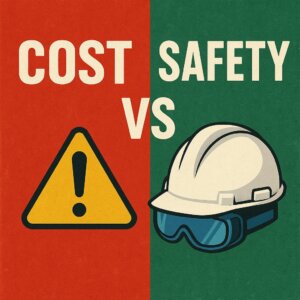As the global energy landscape shifts toward decarbonization, the rapid expansion of photovoltaic (PV) and wind power systems has exposed critical safety risks linked to inadequate insulation protection. Statistics reveal that 12% of PV system fires result from insulation failures, while cable aging in wind turbines accounts for frequent electrical accidents during maintenance. This blog explores the technical challenges, real-world cases, and innovative solutions to enhance insulation safety, empowering professionals to mitigate risks effectively.
Ⅰ. Insulation Challenges in PV System Installation
-
DC High-Voltage Risks and Grounding Standards PV modules generate up to 1,500V DC voltage during operation. Improper grounding of module frames or supports can lead to leakage currents, lightning-induced fires, or electrocution. According to IEC 61730-2:2016, the grounding resistance of PV frames must be maintained below 4Ω. However, field installations often neglect oxide layer removal on aluminum alloy frames, causing grounding failures. For example, a distributed PV project experienced inverter burnout due to corroded grounding wires.
-
Insulation Degradation in Harsh Environments Offshore and desert PV plants face accelerated insulation aging from salt spray, sand abrasion, and UV exposure. Innovative solutions like three-layer epoxy resin coatings (used in a Fujian offshore project) have extended cable insulation lifespans from 5 to 15 years.
-
Safety Blind Spots During Maintenance PV panels remain energized even under low-light conditions. Technicians must use 1,000V-rated insulated gloves and avoid direct contact with damp components. A case study highlighted third-degree burns sustained by a worker replacing a backsheet without proper PPE.

Ⅱ. Insulation Risks in Wind Turbine Operations
-
Offshore Cable Systems Under Extreme Conditions
Deep-sea wind farms utilize 72.5kV submarine cables that endure typhoon-level mechanical stress. Eaton’s separable cable connectors, validated under 350kV lightning impulse tests, reduced insulation faults by 60%. In contrast, non-compliant connectors caused 3.2 annual breakdowns at cable joints
-
Humidity-Induced Insulation Failures
Wind turbine nacelles often exceed 80% humidity, requiring stator winding insulation resistance above 100MΩ (per IEC 60598-1). A northern China wind farm faced turbine shutdowns after humidity control failures dropped resistance to 5MΩ
-
Aging Infrastructure and Predictive Maintenance
Cables in turbines older than 10 years suffer brittle insulation. Projects in Gansu adopted infrared thermography + partial discharge monitoring, predicting defects 6 months in advance and avoiding $2M+ losses

Ⅲ. Cutting-Edge Solutions and Industry Trends
- Smart Monitoring Technologies
- PV Systems: AIM-D100 insulation monitoring devices detect DC faults with ±2% accuracy, slashing troubleshooting from 8 hours to 30 minutes
- Wind Turbines: Cooper’s 72.5kV connectors passed 120kV/15min AC withstand tests, supporting 18MW+ turbines
- Standardized Protocols
- PV Installation: Implement a 3-step insulation test:
- Megohmmeter test before mounting (≥40MΩ);
- System-wide insulation check pre-grid connection (≥1MΩ);
- Quarterly infrared scans
- Wind Turbine Maintenance: Enforce dual-inspection protocols for terminal sealing and torque values (e.g., nacelle bolts at 1,250N·m)
- Material Innovations
- Double-layer XLPE cables withstand 105°C, extending service life by 30%
- Cold-shrink cable joints eliminate flame-based installation, ideal for offshore environments
Ⅳ. Recommendations for Industry Advancement
-
Enhanced Training Systems
Adopt VR simulations to teach insulation tool selection (e.g., Class C hot sticks for high-voltage zones) and live-line working standards -
Unified Safety Standards
Advocate for a Global Insulation Protection Guideline specifying resistance thresholds (e.g., monthly grounding tests for PV arrays) aligned with IEC 62305-2:2024 lightning protection norms
-
AI-Driven Predictive Maintenance
Machine learning models analyzing historical data (e.g., 89.7% accuracy in cable lifespan prediction) can cut repair costs by 42%
Conclusion
Insulation protection is the cornerstone of renewable energy safety. From smart monitoring to material science breakthroughs, integrating technology, management, and training will fortify the industry against escalating risks.








